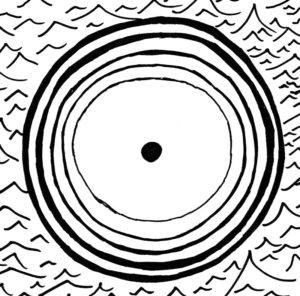
We’re trying to find the frequency of ripples on water at 20 °C from a stone. When the stone hits the water, it has a kinetic energy of 0.5 m2kg/s2. We get this from the equation KE=mv2/2. The water it passes through has a density of ≈0.9982 kg/m3. At T=0, the ripple will begin. When the stone is completely submerged, the first ripple will end. The time between is the frequency of the ripples. But how long will it take the ball to submerge? The deeper it is, the more water it must push. But the slower it goes, the less energy required to push it. There is always the force of gravity on the ball. The ball weighs 1kg and will need to displace ≈1333π cm3 of water. The volume of a sphere is 4/3πr3. This actually weighs ≈4.1802 kilograms, far more than the stone. The stone will float! The buoyant forces acting on the rock will push it upwards, with a force equal to the weight of the water displaced. The water will slow it down according to the drag equation, Cd*p*A*v2/2, where Cd is the drag coefficient, p is the density of the fluid, A is the frontal area, and v is the velocity relative to the fluid. The drag coefficient for a sphere is 0.47. The density of water is 0.9982 kg/m3. So drag is taken care of. Finally, we have the force of gravity, pushing down with the weight of the rock. Calculating the time it takes for the rock’s velocity to fall to 0 will be another challenge, Gangbuster Geometry.
